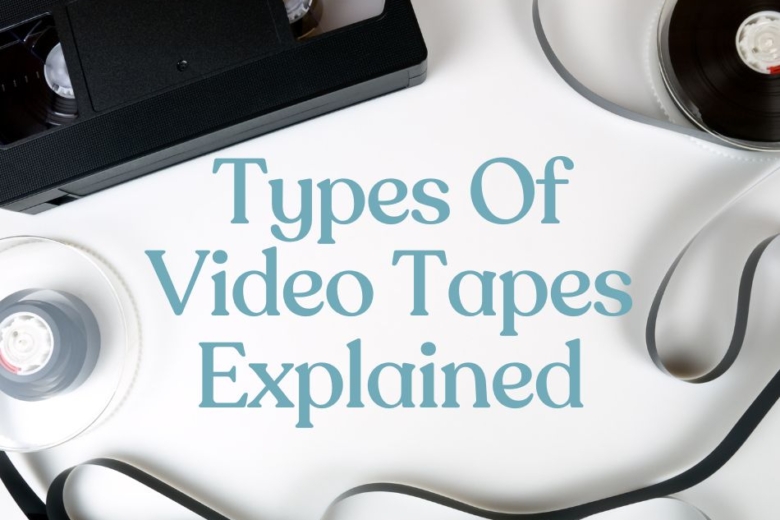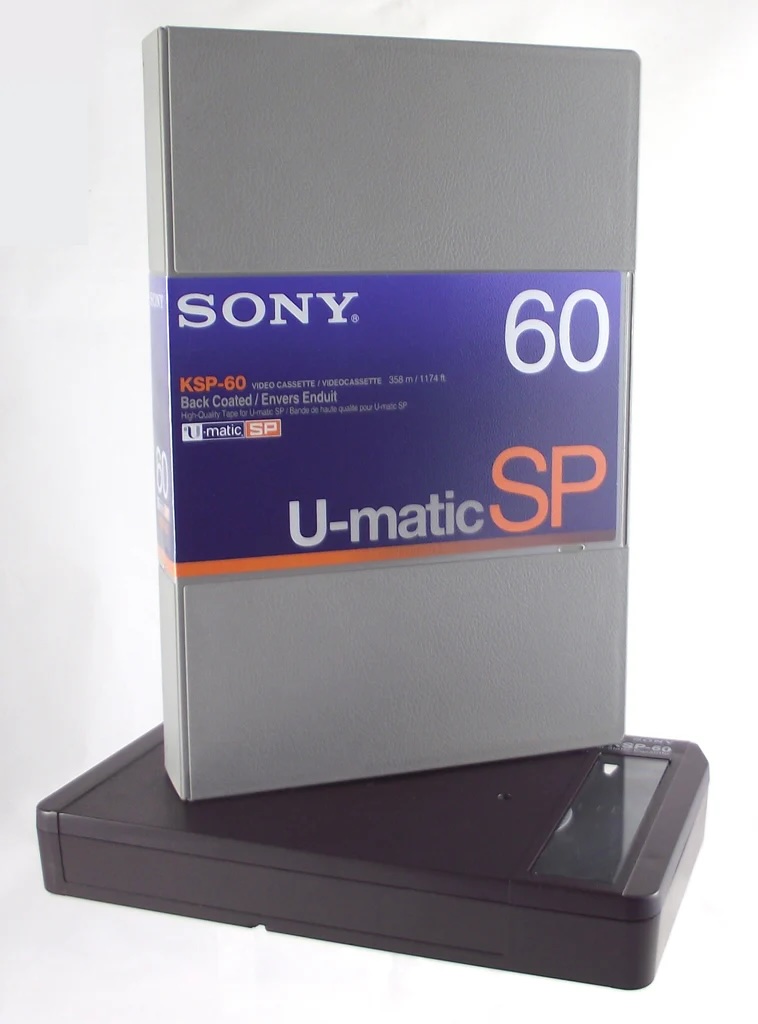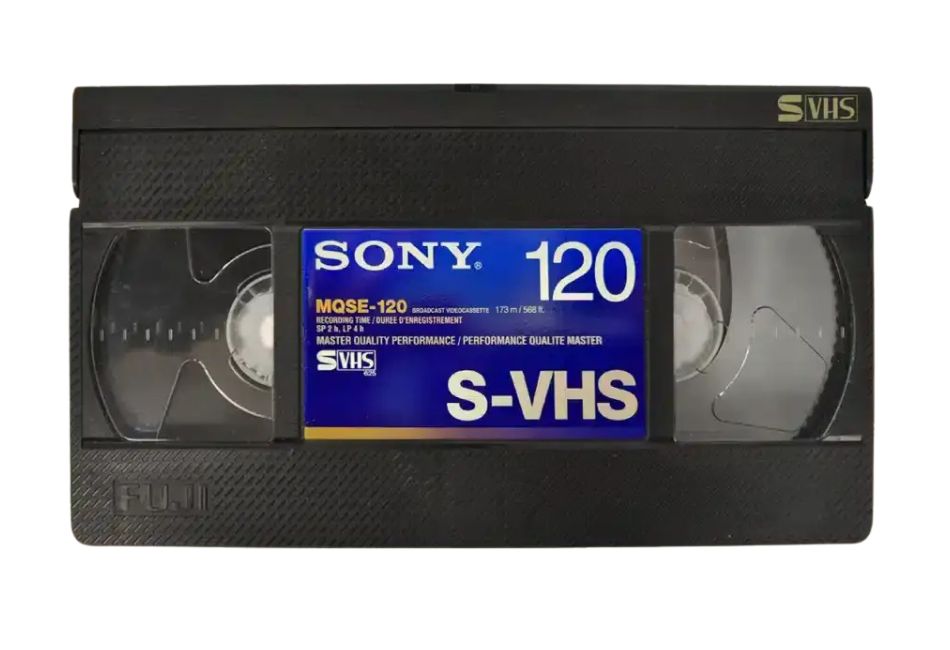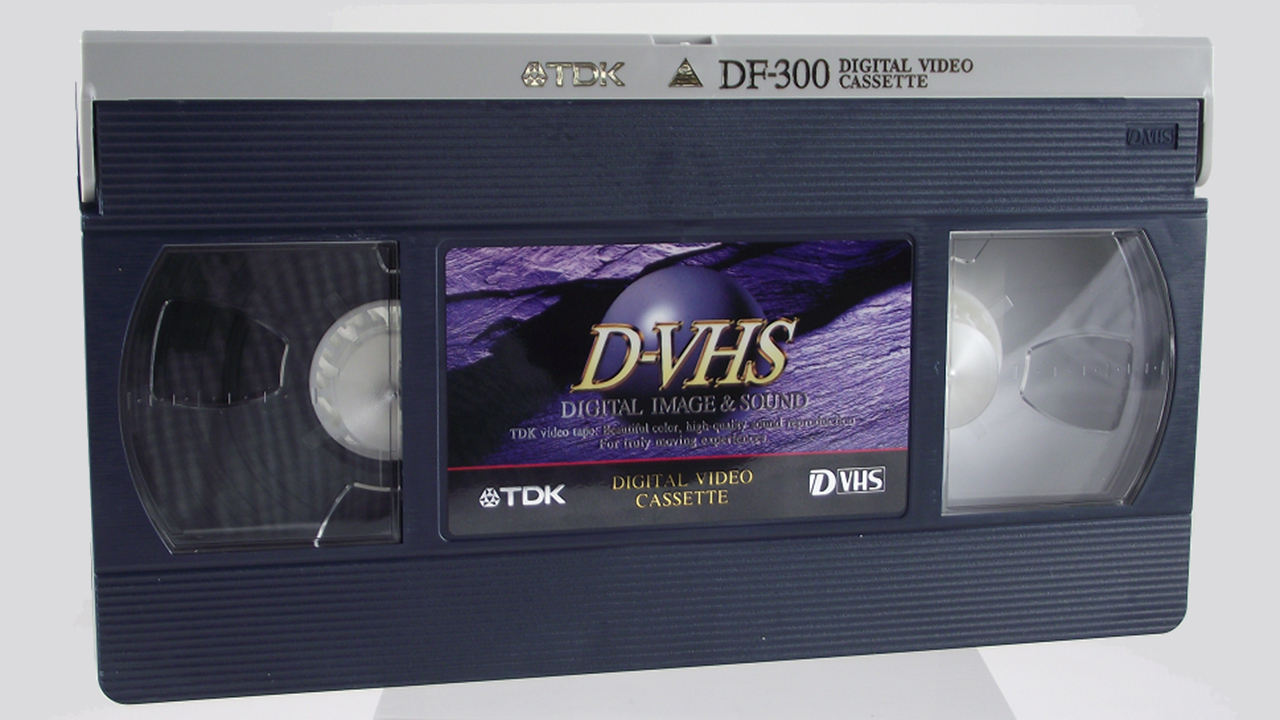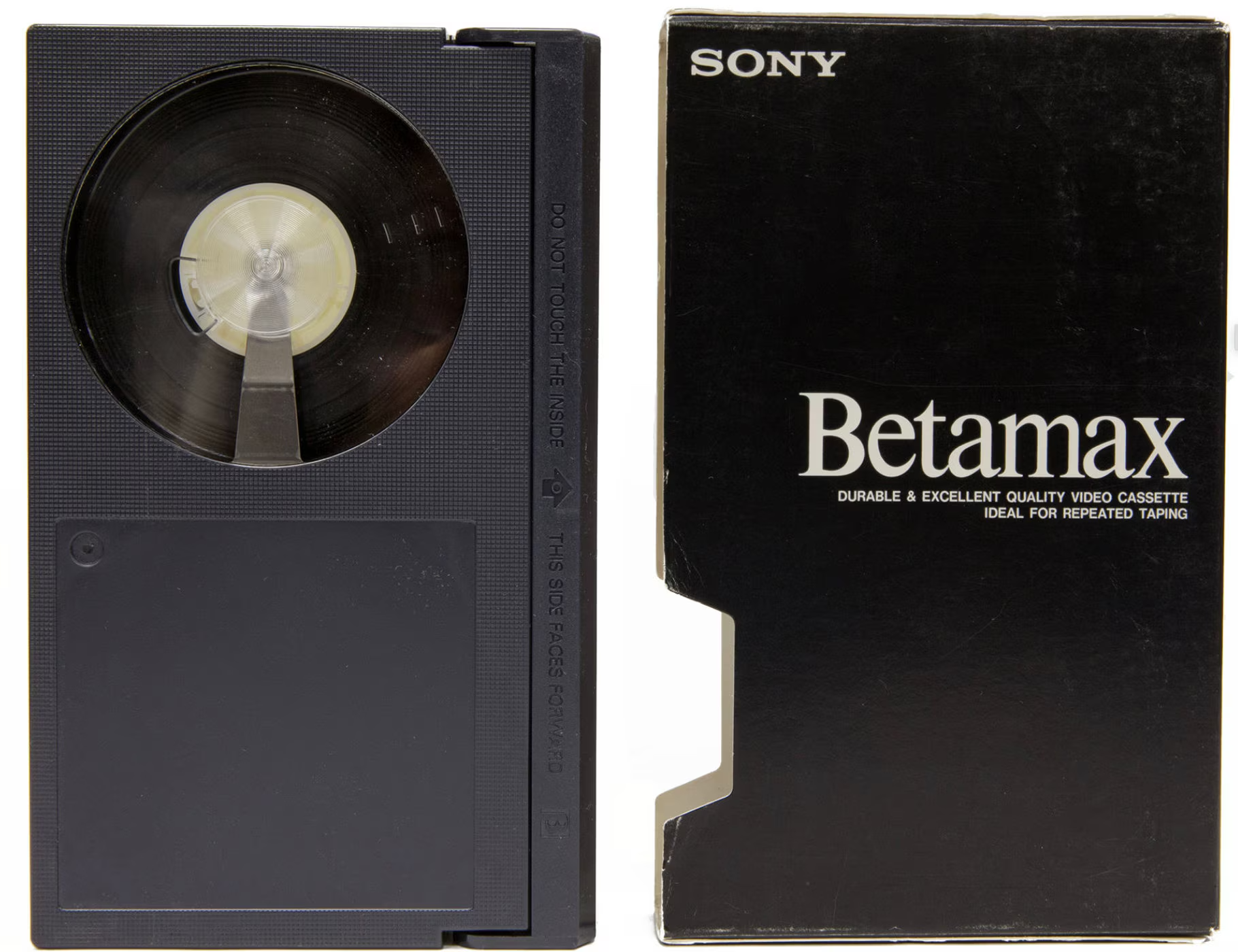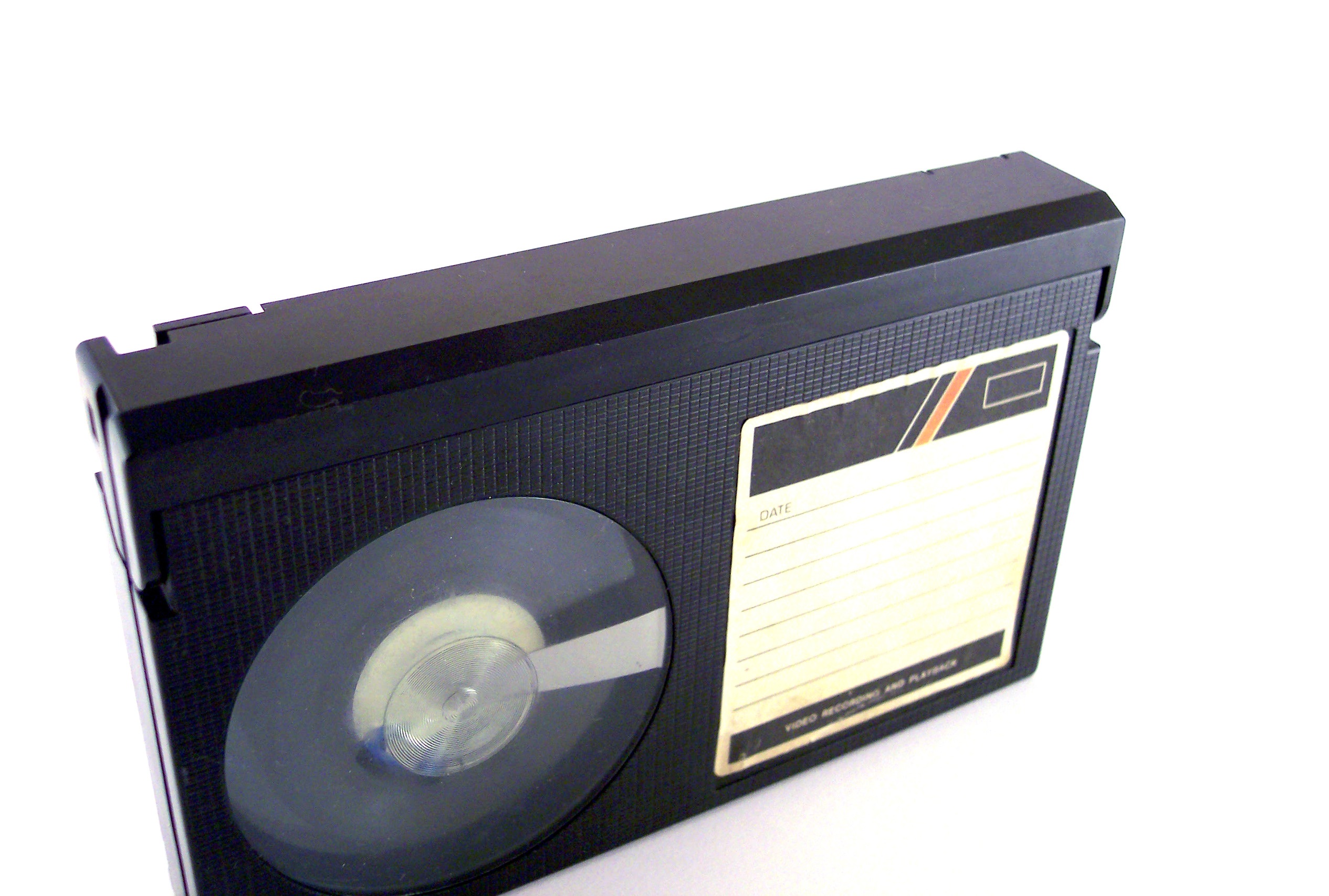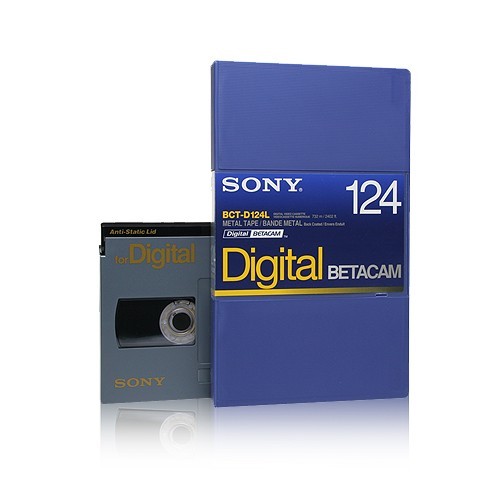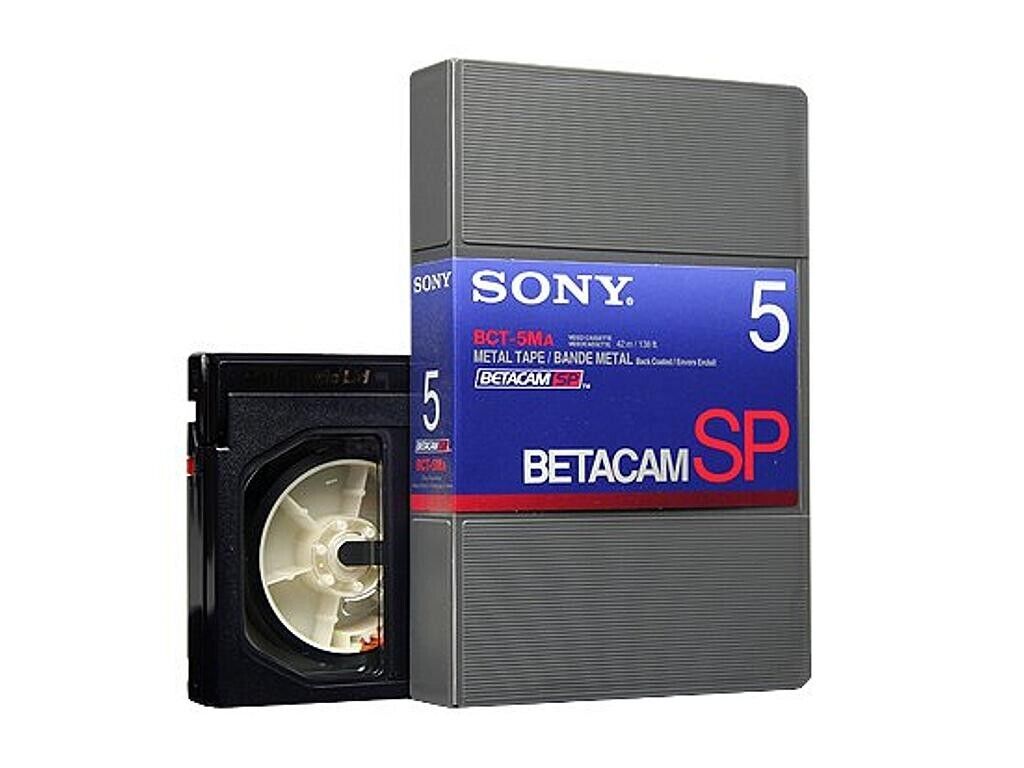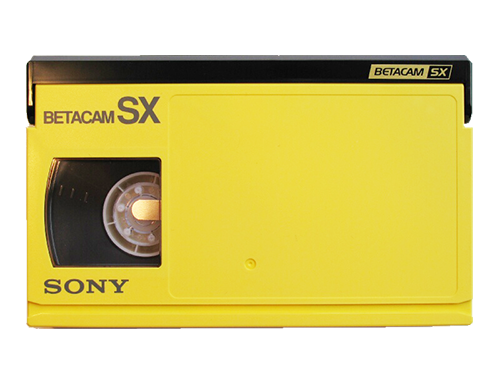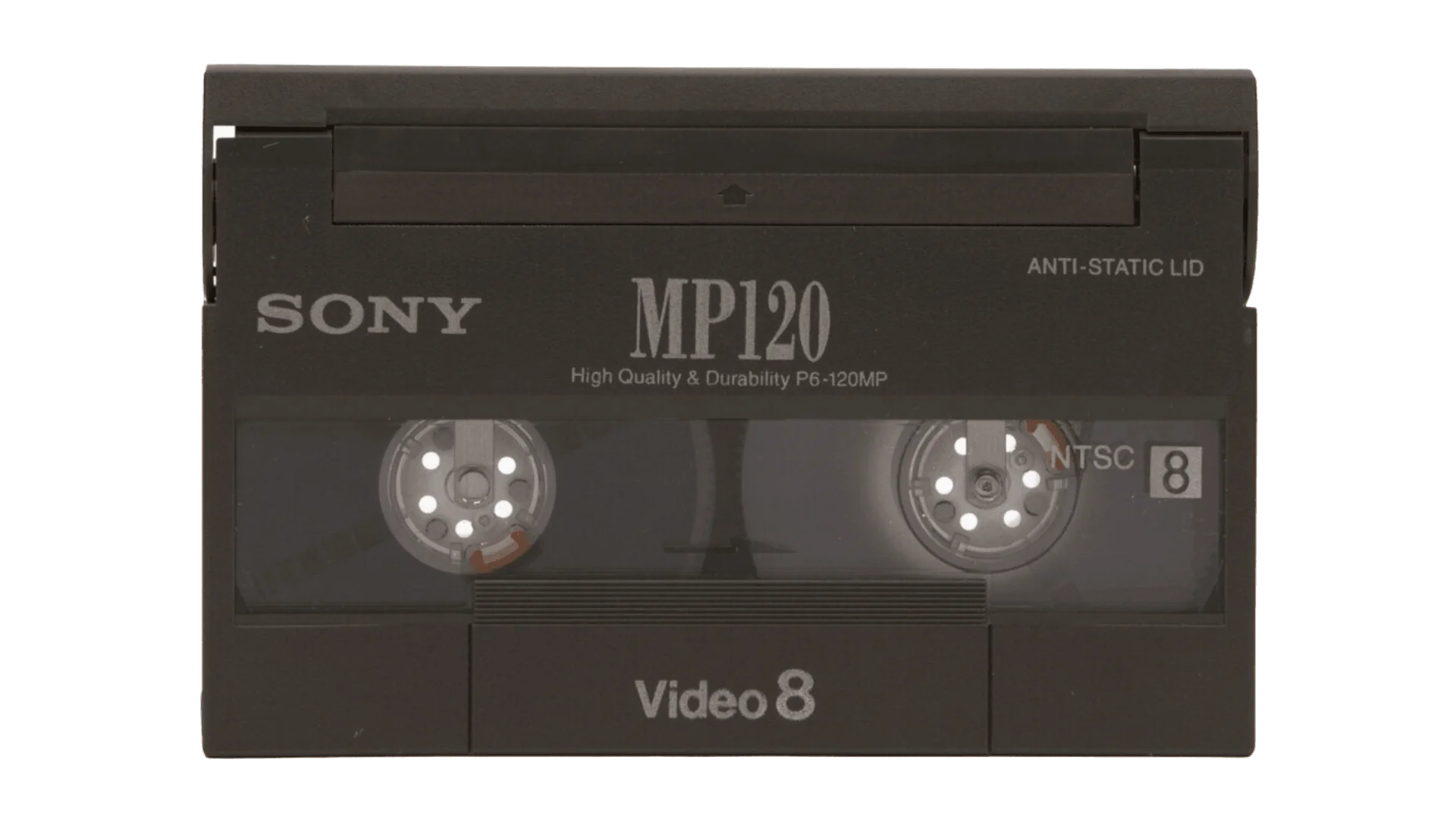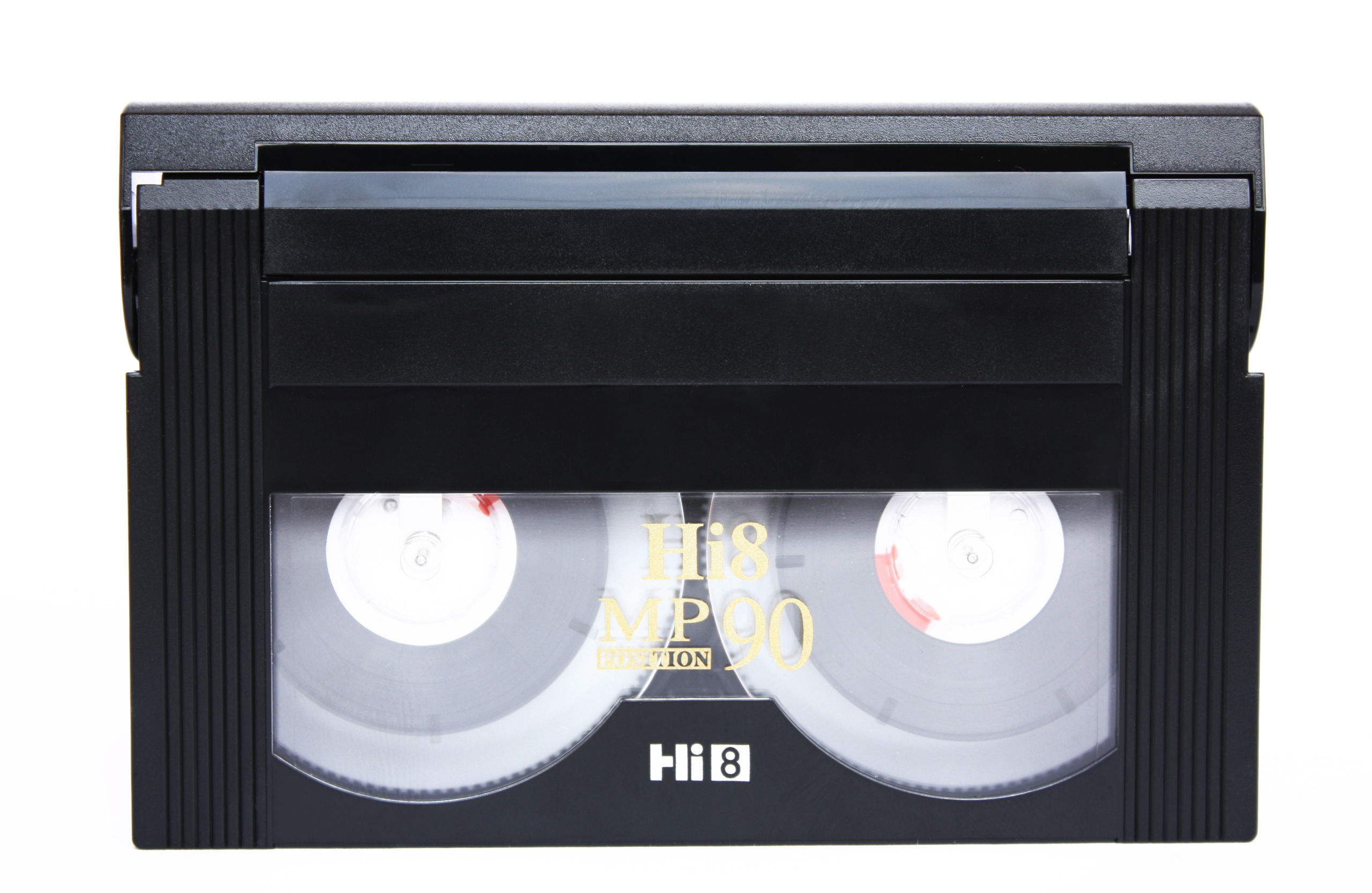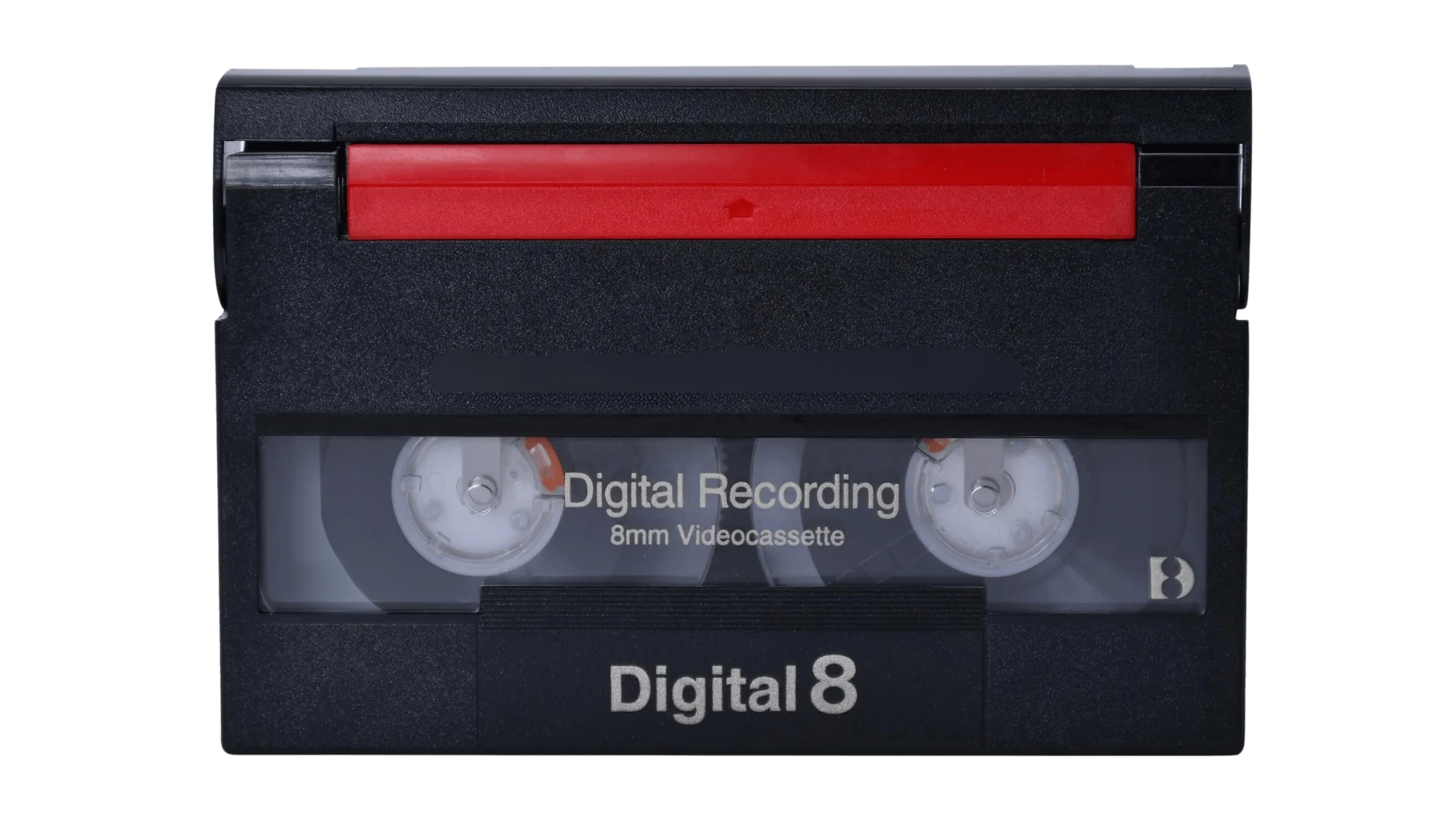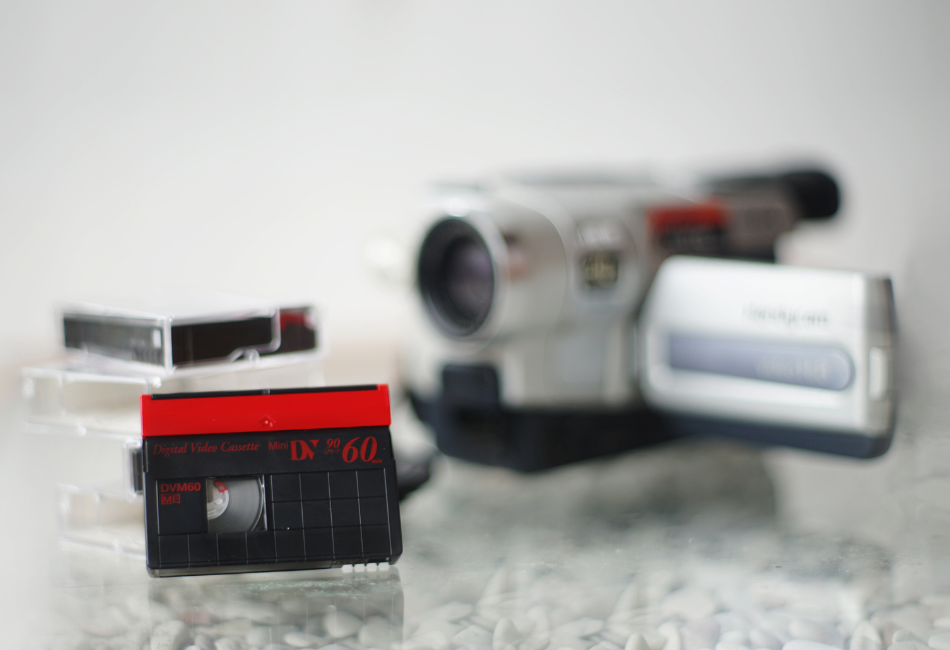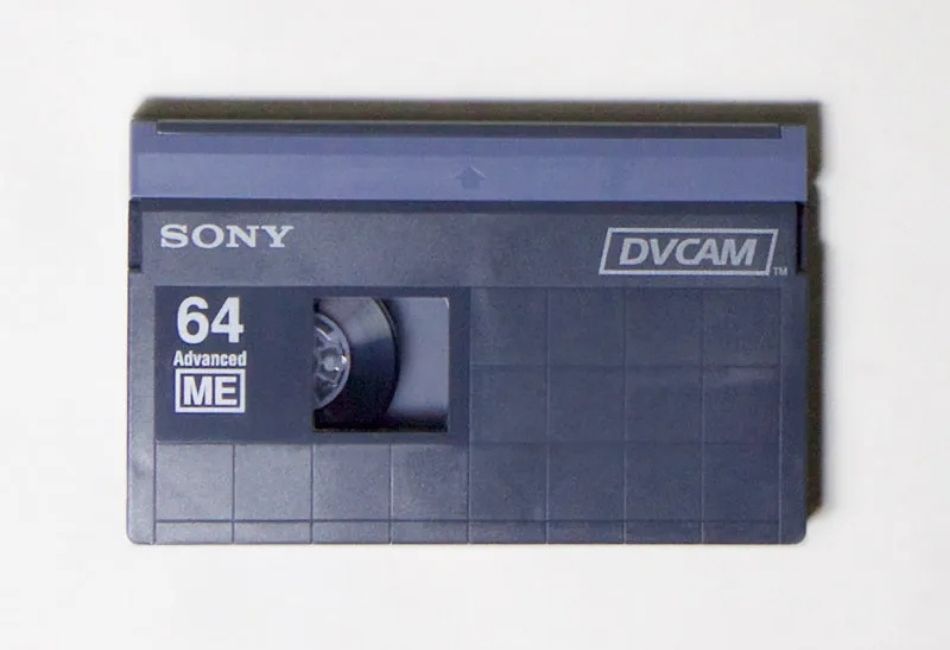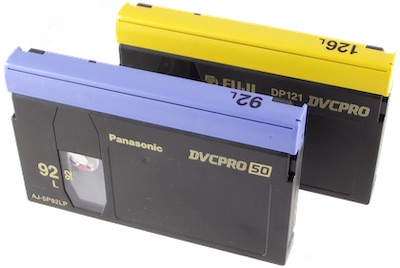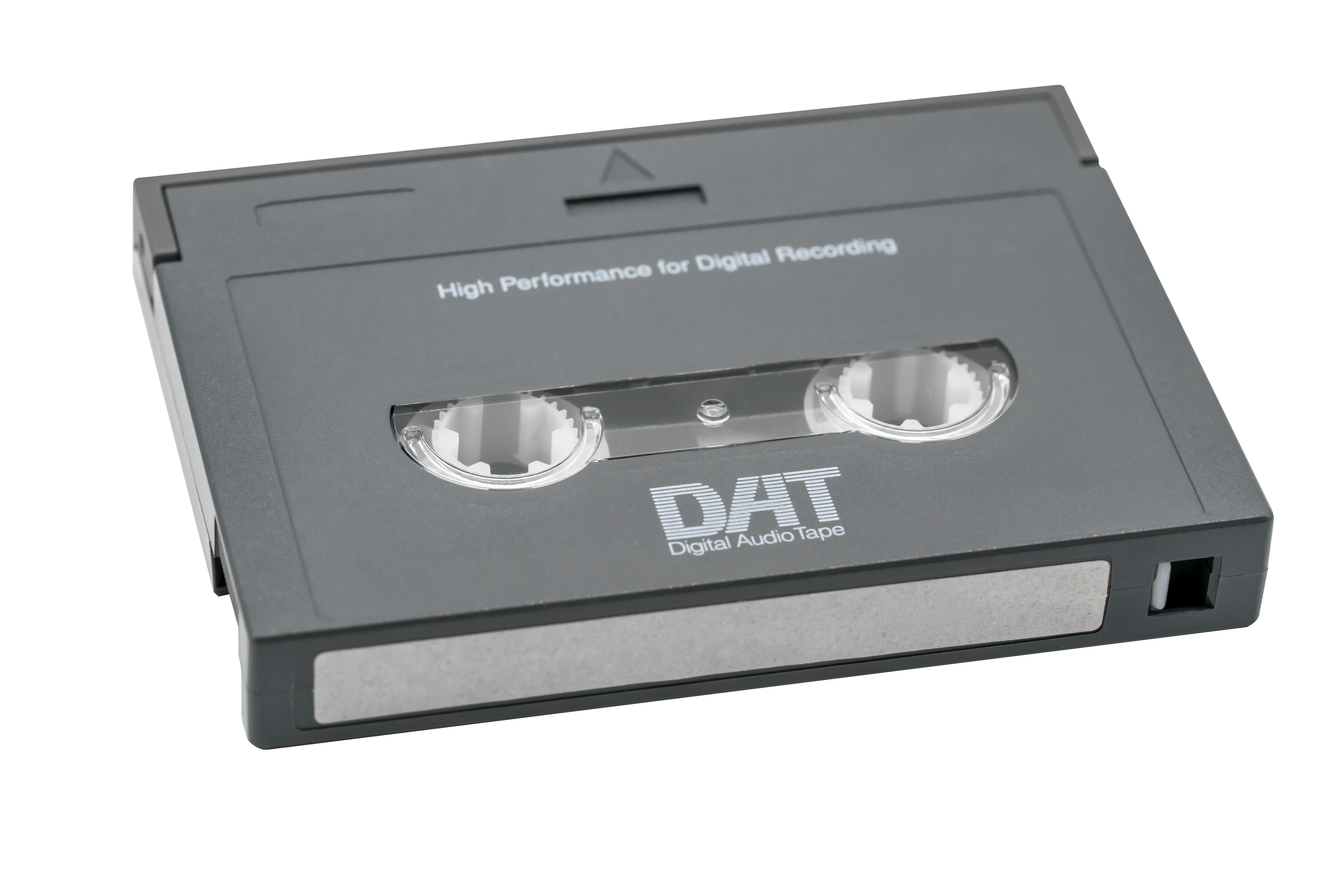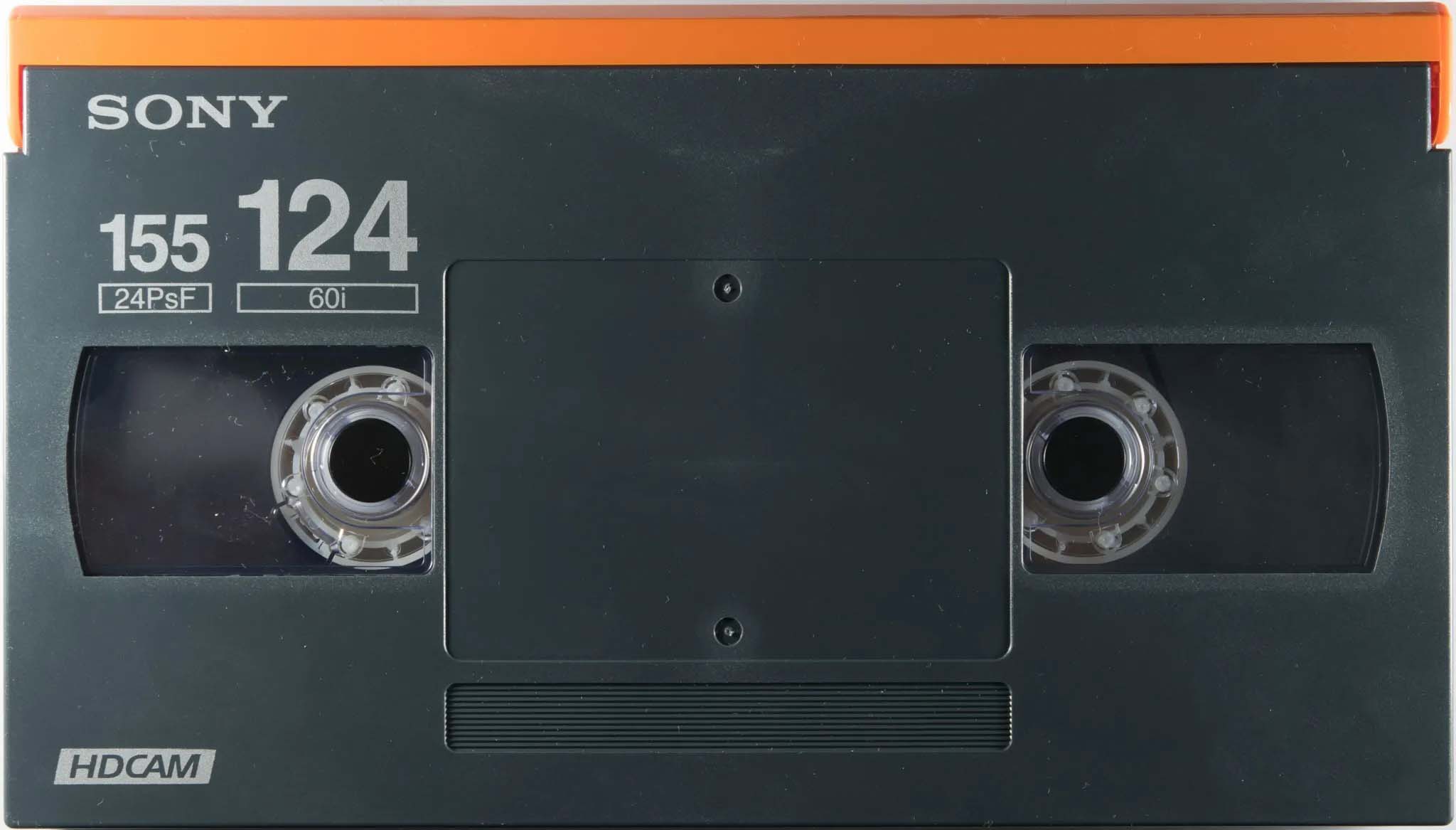Whether you’re digging through old boxes of home movies or handling professional archival footage, video tape types come in all shapes and sizes—literally! Back in the day, chunky cassettes were the gold standard, but as time went on, technologies advanced until we had different types of high-definition video tapes that could fit in the palm of your hand.
Though we’re very much living in the era of streaming, video tapes still hold a lot of value, both sentimental and monetary. However, analog formats tend to deteriorate over time, so it’s a good idea to digitize any tapes you’re holding on to.
Here’s a breakdown of the most common types of video tapes, how to identify them, and what makes each one unique.
THE DIFFERENT TYPES OF VIDEO TAPES EXPLAINED
1. U-MATIC

Introduced in 1971, the U-matic tape was one of the first ever video cassette formats, named for the way the tape was threaded in a U shape around the head drum. These chunky tapes were about the size of a hardcover book and were mainly used by broadcasters and professionals.
The cassette is housed in a thick plastic shell, usually with two large spools visible through a window on top. Despite Sony hoping this video tape type would be popular with home users, the technology was a little too advanced, as less than 40% of people had color TV sets at the time. Ultimately, they were used mostly for business communication and low-budget television.
2. SP U-MATIC
SP stands for Standard Play and was an improved version of U-matic introduced in 1974. These tapes offered better picture and sound quality compared to the original U-matic format, making them the go-to choice for broadcast-quality recordings. They replaced the original U-matic tapes in news stations and production companies, but again, they weren’t ever really adopted by amateur home video makers.
These tapes look nearly identical to regular U-matic cassettes and were a broadcast staple for newsrooms in the late ’80s and ’90s.
3. VHS
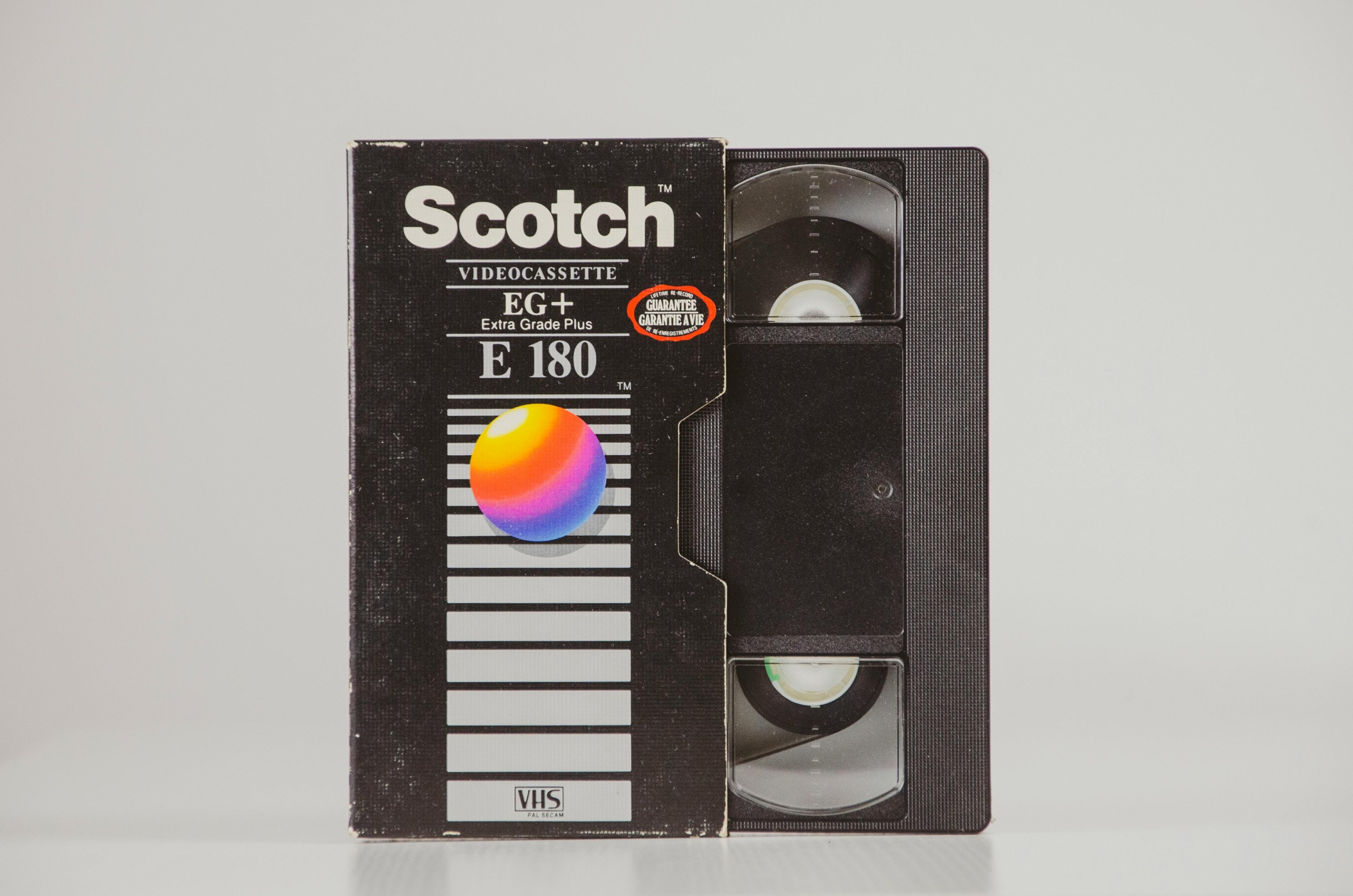
VHS tapes need no introduction. If you grew up in the ’80s or ’90s, you probably had shelves full of these. Designed for home video recording and studio films, VHS tapes are rectangular plastic cassettes about the size of a paperback book, with a flip-up flap covering the magnetic tape inside and two spools visible through clear windows on the front.
Typically, VHS tapes had a capacity of 120 or 180 minutes. The longest VHS tapes could hold around four hours of video content, stored on 1,410 feet of tape, all spooled inside its plastic cassette.
Though VHS reigned supreme as the most popular home video format, ultimately, the convenience of DVDs could not be topped. The last ever studio film was commercially released on VHS tape in 2005. Nowadays, original VHS tapes of classic movies are considered collectors’ items and can fetch huge sums at auction.
4. S-VHS
S-VHS was the next step up from standard VHS ( the S stands for “super”) and offered sharper picture quality for home video enthusiasts and semi-professionals. Standard VHS has a resolution of about 240 lines, while S-VHS can reach up to 400 lines, providing almost double the detail! That means sharper images, better color, and less noise.
The tapes look almost identical to regular VHS, but not all VCRs could play these specialized tapes at a high quality, so they never quite took off like regular VHS.
5. VHS-C
VHS-C tapes were compact versions of VHS tapes, designed for camcorders to make recording home videos more portable and convenient. These compact cassettes could record about 30 to 45 minutes of footage and were the size of a deck of cards.
Despite their small size, they used the exact same magnetic tape as standard VHS and had an identical video quality. Because of this, users could watch VHS-C tapes on regular VCR players, using an adaptor that looks like a regular VHS cassette but with a slot for the VHS-C tape to go.
6. D-VHS tapes
D-VHS (Digital VHS) is a high-definition digital video tape type designed to bring HD-quality video recording to VHS tapes. Even though the tapes looked just like regular VHS cassettes, they could store crystal-clear digital video at up to 1080i resolution; a huge leap from standard VHS.
It was one of the few formats capable of recording HDTV broadcasts before DVDs and hard drives became mainstream. These tapes could store high-definition video, but they required special D-VHS players for playback, which limited their use.
7. BETAMAX
Betamax was Sony’s answer to VHS, introduced in the 1970s with the hope that it would become the dominant home video format. On paper, Betamax was superior: it offered better video quality and a smaller cassette size with more durable tape. However, Betamax could only record one hour of footage when it first launched, while VHS could do two hours. VHS was also cheaper to produce, so it was more popular with consumers.
Though Betamax put up a good fight against VHS, by the mid-1980s, VHS had won the battle. Though Betamax actually kept being made in Japan until 2016!
8. BETACAM
A step up from Betamax, Betacam was designed specifically for broadcast TV, film production, and news gathering, and it quickly became one of the most widely used video formats in the television industry for decades. While Betamax was for home use, Betacam was built for high-quality professional video recording with better image quality, durability, and performance.
These tapes came in two sizes: standard Betacam (about the size of VHS) and smaller Betacam cassettes for portable camcorders. Betacam was the gold standard for professional video production from the 1980s through the early 2000s because it offered excellent picture quality, durability, and a reliable, easy-to-use system.
9. DIGITAL BETACAM
Also known as DigiBeta, Digital Betacam was introduced in 1994, offering digital quality video in a tape format. If you’ve ever watched a TV show, commercial, or documentary from the mid- to late-1990s, there’s a good chance it was recorded or archived on Digital Betacam.
Instead of recording analog video signals like its predecessors, Digital Betacam records broadcast-quality digital video with less noise, better color accuracy, and sharper images. It was ideal for broadcast TV, film post-production, and archival storage, so quickly became a popular format for professionals. Lookswise, the cassettes are nearly identical to regular Betacam, but with a blue lid.
10. BETACAM SP
Another evolution of the Betacam, the Betacam SP (for Superior Performance) improved on the original Betacam with better picture and sound and offered 90 minutes of recording time.
The format was technically discontinued in 2001 along with the other Betamax formats, but remained a gold standard for professional video recording well into the 2010s.
11. BETACAM SX
A digital version of the Betacam SP, the Betacam SX was introduced in 1996 as a cheaper alternative. It still produced high-quality footage but was ideal for news productions and field reporting.
The tapes looked similar to earlier Betacam formats, with yellow lids to distinguish them. Betacam SX decks could play both Betacam SP and Digital Betacam tapes, making it a versatile choice for TV stations transitioning to digital.
12. VIDEO8
Video8 tapes came to market in the mid-1980s and were widely used in compact camcorders for home movies. The tapes are smaller than VHS and Betamax, making them perfect for handheld video recording
These small, compact tapes are about the size of an audio cassette, with two small spools visible through plastic windows. Able to store around two hours of video footage, with the same quality as a VHS, they were a big deal for capturing family memories before digital cameras became mainstream. It was eventually replaced by its higher-quality successors, Hi8 and Digital8.
13. HI8 VIDEO
Hi8 was the upgraded version of Video8, offering better video quality and often used for more serious home videos or semi-professional recordings.
Though they are the same size as Video8, using 8mm magnetic tape, Hi8 tapes deliver sharper images and clearer sound thanks to improved signal processing. The format was popular throughout the 1990s and early 2000s, before digital formats like MiniDV took over.
14. DIGITAL 8
Digital8 tapes were Sony’s attempt to bring digital video quality to the Video8 format. These tapes used the same cassette size as Video8 and Hi8 but recorded digital video instead of analog.
Digital8 offers clearer picture quality, better color accuracy, and digital audio compared to its analog predecessors.
15. MINIDV
MiniDV video tape types were a giant leap forward in video recording when they hit the market in 1995, as they offered digital quality video capture in a super compact format. These tiny tapes became especially popular for camcorders, making it easier to shoot high-quality video without bulky equipment. Many family home movies from the late ’90s and early 2000s were recorded on MiniDV.
MiniDV tapes are small (about 2.5 inches wide) and usually come in clear plastic cases.
16. DV CAM
DV Cam was Sony’s professional version of MiniDV, offering higher-quality digital video with better durability, and became a go-to for broadcast use. DV Cam tapes run 33% slower than MiniDV, which improves video stability and durability, making them ideal for broadcast TV, documentaries, and professional video production. The formal also supports locked audio, ensuring perfect audio sync
DV Cam tapes are slightly larger than MiniDVs and were widely used before digital file-based systems became the standard.
17. DVC PRO
Panasonic developed DVC Pro in 1995 for professional video production, especially in newsrooms and for field reporting.
These tapes were known for their durability, locked audio, and improved error correction. DVC Pro was a favorite among broadcast journalists because its sturdy design could withstand extreme temperatures and rough handling in the field. Thicker than MiniDV and DV Cam, they can also be identified by their bright yellow labels.
18. DAT TAPES
Digital Audio Tape (DAT), introduced in the late 1980s, was primarily used for high-quality audio recordings, but occasionally stored digital video. The small cassettes are around the same size as MiniDV tapes.
DAT tapes used 8mm-wide magnetic tape and were known for their ability to record at a much higher fidelity than standard analog formats like cassette tapes. The format was eventually overshadowed by digital file-based systems (like MP3s and WAV files) and hard drive recording.
19. HD CAM
HDCAM, introduced in 1997 by Sony as a member of the Betacam family, was the brand’s high-definition video tape type. It was designed to provide broadcast-quality HD video recording in a time when there was a growing demand for high-definition television production.
Offering up to 1080i resolution, HD Cam provided crystal-clear video quality that became the standard for professional productions. These tapes were reliable, durable, and capable of storing high-quality footage for broadcast. Though it was a popular format for a while, it was phased out when digital files took over.
WE DIGITIZE ALL TYPES OF VIDEO TAPES
No matter what type of video tape you’re holding onto, those recordings deserve to be preserved. EverPresent digitizes all types of video tapes, helping you protect your memories for future generations.
Get in touch today to learn more about our video digitization services.

